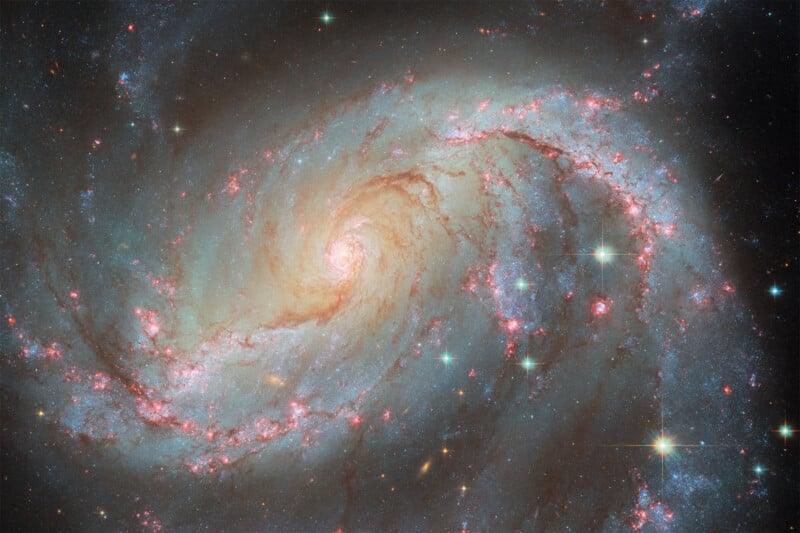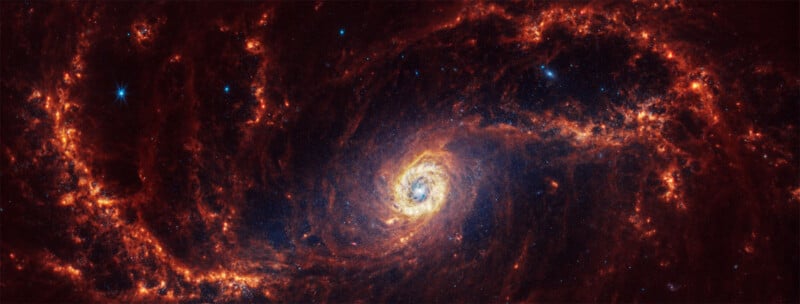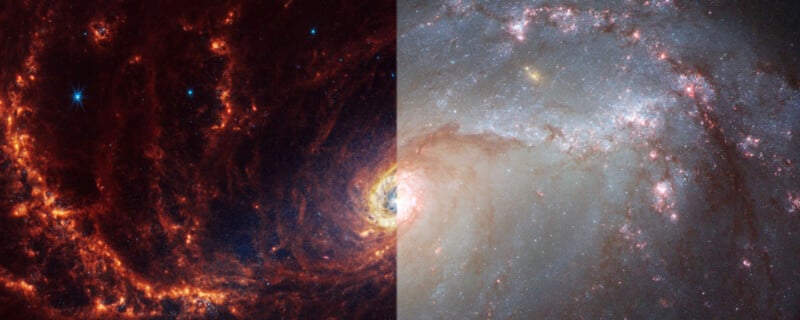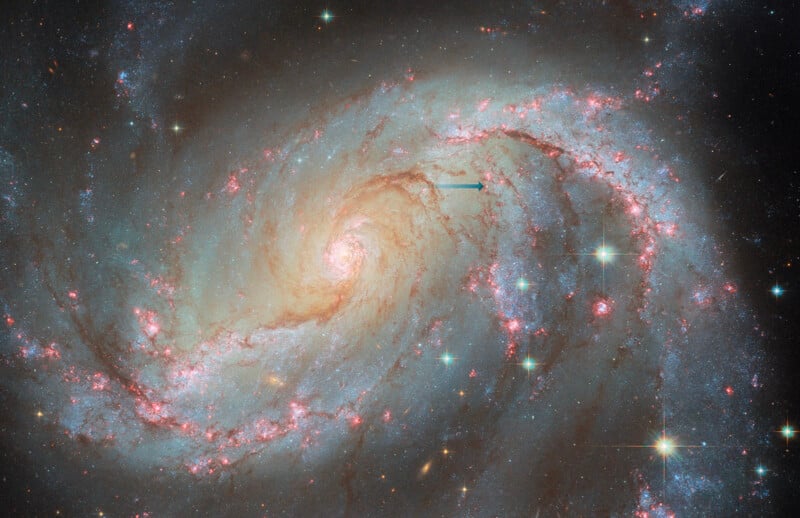
The NASA/ESA Hubble Space Telescope continues to churn out fantastic space images. The latest captured by the 34-year-old telescope shows barred spiral galaxy NGC 1672 in all its luminous glory.
NGC 1672 is about 49 million light-years from Earth in the constellation Dorado. Like other spiral galaxies, NGC 1672 features large, distinct arms extending from its galactic core. In NGC 1672’s case, the two large arms shine due to hydrogen gas illuminated by radiation created by infant stars nestled in the interstellar gas and dust, shrouded from view.
These newly formed stars emit extremely powerful X-ray radiation, which has been previously observed by NASA’s Chandra Observatory. The new James Webb Space Telescope has also peered at NGC 1672 as part of its ongoing Physics at High Angular Resolution in Nearby Galaxies (PHANGS) program.


Near NGC 1672’s center, Hubble spots the active galactic nucleus. “This X-ray powerhouse makes NGC 1672 a Seyfert galaxy,” NASA explains. “It forms as a result of heated matter swirling in the accretion disk around NGC 1672’s supermassive black hole.”

This makes Hubble’s new image spectacular enough, but something else is happening in the image: a fleeting cosmic view of a supernova. Of the six images Hubble captured to create the final composite above, one included a supernova, SN 2017GAX. This was a Type I supernova “caused by the core-collapse and subsequent explosion of a giant star that went from invisible to a new light in the sky in just a matter of days.”

The supernova may appear small in the image above, but it is a massive deal to scientists. These transient events are challenging to spot and of significant interest to astronomers and physicists.
Image credits: Hubble images: ESA/Hubble & NASA, O. Fox, L. Jenkins, S. Van Dyk, A. Filippenko, J. Lee and the PHANGS-HST Team, D. de Martin (ESA/Hubble), M. Zamani (ESA/Hubble). | Webb image: NASA, ESA, CSA, STScI, Janice Lee (STScI), Thomas Williams (Oxford), and the PHANGS team. | Chandra image: X-ray: Chandra: NASA/CXC/SAO, XMM: ESA/XMM-Newton; IR: JWST: NASA/ESA/CSA/STScI, Spitzer: NASA/JPL/CalTech; Optical: Hubble: NASA/ESA/STScI, ESO; Image Processing: L. Frattare, J. Major, and K. Arcand.
